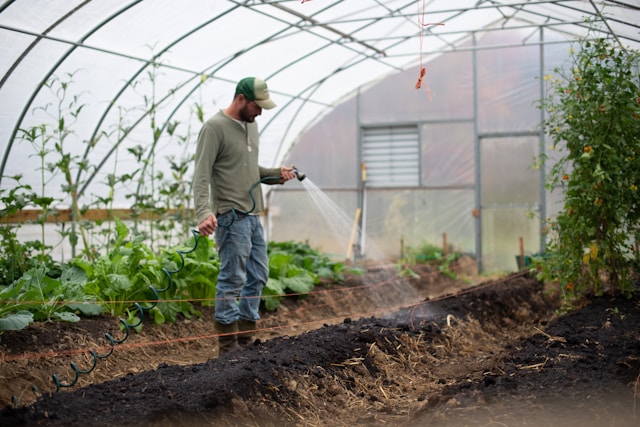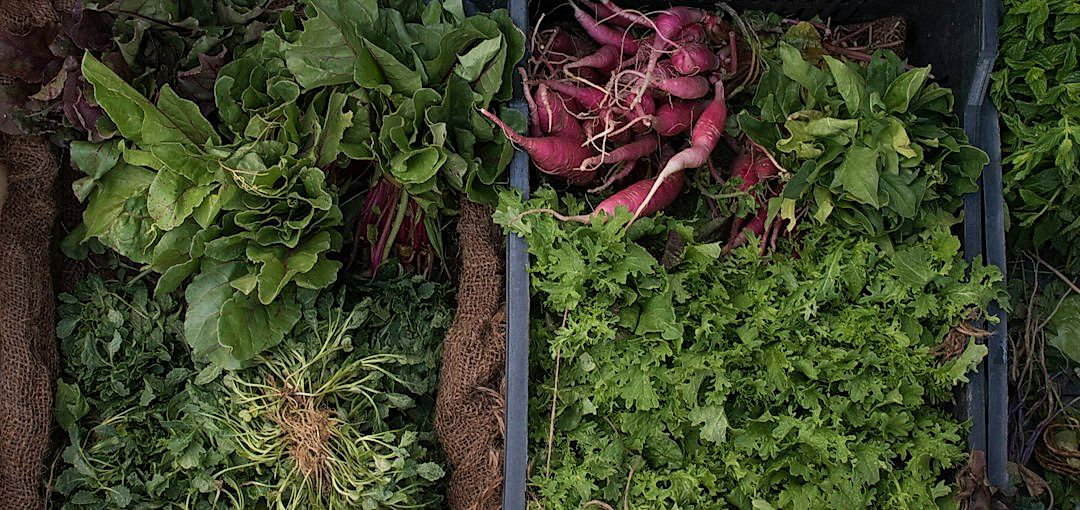Expanding a business is a significant decision for any grower, symbolizing both success and the potential for increased challenges.
Various factors, such as assessing the current market, understanding consumer patterns, and ensuring harvest quality need careful consideration.
Even the most successful growers can face obstacles while scaling up their business.
The purpose of this article is to provide valuable insights to such growers, irrespective of their produce, to foster growth.
It will make you aware of the right techniques, methods, and strategies to run a successful agricultural enterprise.
Brace yourself for a deeper understanding of sustainable business expansion.
Tips For Produce Growers Looking To Expand Their Business
1. Diversify crops to meet evolving market demand
Diversifying crops can be one of the most effective strategies for expanding a produce business and meeting evolving market demands.
This is especially true in today’s world, where consumers are constantly looking for new and diverse food experiences.
By growing a variety of crops, you can offer something for everyone, thereby attracting a wider customer base.
Moreover, crop diversity can also be a form of insurance against failure of a single crop due to disease, pests, or unfavorable weather conditions.
There are two main ways to approach crop diversification.
The first is to diversify horizontally, which involves growing a wide range of crops at the same time.
This could involve, for example, adding new vegetable or fruit varieties to your existing portfolio.
The second approach is to diversify vertically, which entails adding value to your existing crops through processing or branding.
For instance, instead of only selling fresh tomatoes, you could also offer sundried tomatoes, tomato sauce, or even branded tomato products.
Both these approaches have their pros and cons, and the selection of the appropriate strategy should depend on factors such as your financial resources, existing market demand, and competition among others.
In order to make informed decisions about what crops to grow, it is crucial to have a deep understanding of the market.
This involves constantly staying up-to-date with the latest food trends, understanding your customers’ preferences, and monitoring the activities of your competitors.
Keep in mind also that crops need to be rotated on a regular basis in order to maintain soil fertility and prevent the build-up of pests and diseases.
Therefore, a good crop diversification strategy should consider not only market demand but also agronomic factors.
For instance, rotating crops with different rooting depths can help improve soil structure and nutrient availability, while rotating crops from different families can help break pest and disease cycles.
Implementing a crop diversification strategy requires careful planning, patience, and commitment, but the potential rewards in terms of business expansion and sustainability are significant.
2. Invest in Technology for Efficient Farming Practices
As advancements in technology are becoming increasingly accessible to produce growers, it has become fundamentally important to incorporate these advancements into their operations.
Efficient farming practices can be significantly enhanced by the adoption of technology.
There are numerous agricultural technologies available that can help you save time, increase your yield, and ultimately, increase your profits.
One of these technologies is precision agriculture, which involves the use of GPS mapping systems and satellite imagery to monitor crop yields, soil levels, and weather patterns.
With the help of this technology, farmers can make more accurate decisions about when and where to plant crops, resulting in a more efficient use of resources.
Automation is another technological advancement that can lead to more efficient farming operations.
For example, automated irrigation systems can save significant amounts of time and make watering your crops much more efficient.
These systems use sensors to determine when crops need watering and automatically distribute the right amount of water, reducing waste and saving water.
Investing in technology also includes investing in farm management software.
This software can help you track and analyze all aspects of your farming operation, including labor costs, equipment costs, yield per crop, and much more.
By having this information at your fingertips, you can make more informed decisions about your business and identify trends or issues before they become problems.
While investing in technology may require an initial money and time investment, the return on investment can be significant.
Moreover, because technology can increase efficiency, it can help to alleviate some of the pressures of agricultural production such as labor costs, time constraints, and unpredictable weather conditions.
Therefore, for those produce growers who are looking to expand their business, the careful selection and implementation of these technological tools can indeed improve efficiency and subsequently contribute to business growth.
Remember, investing in technology not only shows your commitment to modern farming practices but also shows your willingness to adapt to change, which is key in a constantly evolving industry such as agriculture.
3. Establish Partnerships with Local Restaurants and Grocers
One of the most effective ways to grow a produce business is by establishing partnerships with local restaurants and grocery stores.
This strategy not only opens up new sales channels, but also provides an opportunity for growers to get their products in front of a wider audience.
Most restaurants and grocers prioritize fresh and local produce, this gives you an edge over competing growers who may not be based locally.
Therefore, reaching out to these establishments is an essential step in expanding your produce business.
It’s beneficial to educate potential partners on the value and quality of your produce.
Providing samples and offering flexible delivery options can sweeten the deal for them.
Approaching local restaurants and grocers for partnerships allows for better market penetration, sustained business, and symbiotic growth.
Consistent supply and adherence to quality standards is key to maintaining these relationships in the long term.
Growers may even find opportunities to collaborate on special promotions, further increasing product visibility.
These collaborations can provide attractive incentives for frequent purchases and loyalty, driving up your sales.
Hosting visits to your farm can also foster a stronger connection with your business partners and their customers.
Transparency in your farming practices can reinforce trust in your produce and brand.
By tapping into local markets through partnerships, you can secure a stable and recurring income.
It is still important to remain open to other avenues of growth, balancing dependency and business risks.
Partnering this strategy with other methods in your growth plan can lead to greater scalability and resilience for your produce business.
Involving a marketing professional can help leverage these partnerships further, along with exploring other expansion opportunities.
4. Indulge in Organic Farming to Attract Niche Consumers
One promising route for produce growers looking to expand their business is by indulging in organic farming.
The consumer demand for organic fruits, vegetables, and other crops has been on a steady increase in recent years.
With more and more people becoming conscious about their health and environment, the market for organic produce continues to grow.
The perceived health benefits and eco-friendly nature of organic products attract a niche segment of consumers.
Engaging in organic farming not only capitalizes on a growing market tendency but also renders a positive impact on the environment, appealing to conscious consumers.
However, transition to organic farming is not a sudden process.
It requires a complete change in the farming practices and also needs growers to abide by certain guidelines and standards set for organic farming.
The process may seem tedious initially, but the results can be financially rewarding in the long run.
Several aid programs and grants are available for farmers who wish to go organic, which can help buffer the transition costs.
Besides the financial gains, the satisfaction of contributing to a safe and healthy environment can be spiritually enriching.
Organic farming also improves the soil health and promotes biodiversity thereby maintaining a healthy ecosystem.
Marketing your produce as organic can significantly enhance your brand image and can be a powerful selling point.
With appropriate certifications, growers can differentiate their produce in the market, attracting health-conscious consumers and restaurants serving organic food.
If you haven’t considered this path, now could be the time to explore the potential of organic farming.
It might be the key to expanding your business as well as making a positive contribution to the environment and society-at-large.
5. Enhance online presence for wider market access
In the digital age, enhancing your online presence is essential to expand your produce business.
A strong online presence translates into wider market accessibility, which can significantly increase your customer base.
An effective way to start is by creating a user-friendly website that showcases your products, shares your farming practices, and ensures easy online ordering for customers.
Invest in a professional website design that is visually appealing and informative.
Make sure your website has a responsive design that adapts to different devices such as smartphones, tablets and desktop computers.
Consider SEO (Search Engine Optimization) strategies. Incorporating relevant keywords in your website’s content can significantly improve your site’s visibility on search engines, driving more traffic to your website.
It’s also beneficial to list your business on online directories such as Google My Business, to increase your discoverability.
Make use of technologies like e-commerce platforms that can help you sell your produce online, directly to consumers.
Beyond having a website, the use of social media platforms is equally important.
Platforms like Facebook, Instagram and Twitter can help you engage with your customers on a more personal level, share updates about your farm’s activities, and promote your products.
Always remember to post high-quality, visually appealing images of your fresh produce to attract attention and engage viewers.
Also, consider leveraging on online advertising through social media platforms, Google Adwords or other advertising platforms to reach a wider audience.
Another useful strategy would be to foster online partnerships with other businesses or bloggers who can advocate for your products online.
Lastly, remember that building an online presence is a continuous process and requires regular effort to create and post content, engage with customers and optimize your online strategy.
An increased online presence is not just about selling more products, but about building a strong connection with your customers, sharing your journey, and growing your market.
The Bottom Line
Strategic adaptation to the changing agricultural landscape is indispensable for the survival and progress of farms.
To thrive, it is crucial for them to diversify their crops in line with evolving market demands and leverage the power of technology for more efficient farming practices.
Building ties with local restaurants and grocery stores can also open new avenues for business.
Sustainable agriculture, like organic farming, can attract a niche market and bolster profit margins.
Lastly, strengthening online presence can significantly enhance market access, reaching a wider audience than ever before.
Through these methods, farms can ensure their long-term viability and prosperity while contributing to local economies and promoting environmental sustainability.




